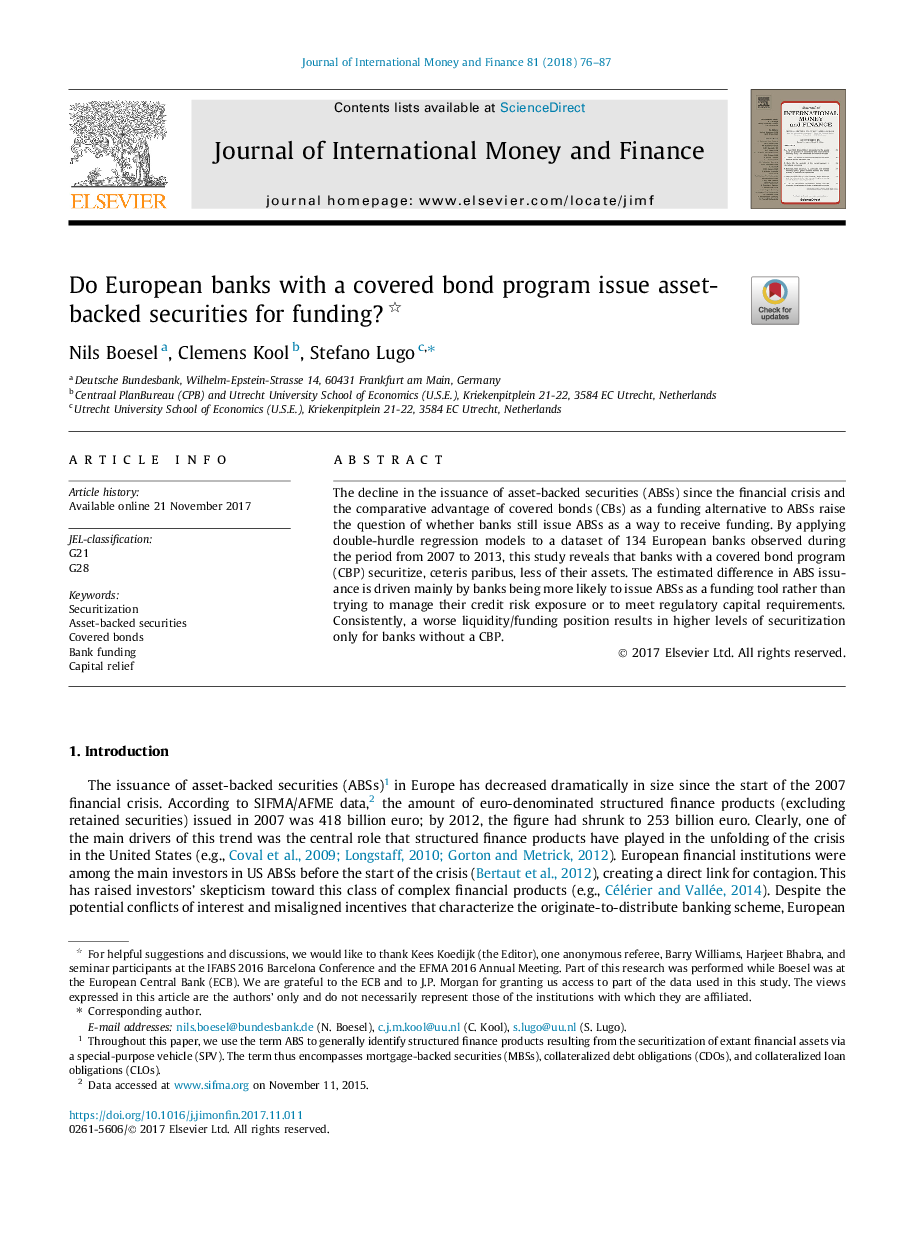| Article ID | Journal | Published Year | Pages | File Type |
|---|---|---|---|---|
| 7365337 | Journal of International Money and Finance | 2018 | 12 Pages |
Abstract
The decline in the issuance of asset-backed securities (ABSs) since the financial crisis and the comparative advantage of covered bonds (CBs) as a funding alternative to ABSs raise the question of whether banks still issue ABSs as a way to receive funding. By applying double-hurdle regression models to a dataset of 134 European banks observed during the period from 2007 to 2013, this study reveals that banks with a covered bond program (CBP) securitize, ceteris paribus, less of their assets. The estimated difference in ABS issuance is driven mainly by banks being more likely to issue ABSs as a funding tool rather than trying to manage their credit risk exposure or to meet regulatory capital requirements. Consistently, a worse liquidity/funding position results in higher levels of securitization only for banks without a CBP.
Related Topics
Social Sciences and Humanities
Economics, Econometrics and Finance
Economics and Econometrics
Authors
Nils Boesel, Clemens Kool, Stefano Lugo,
